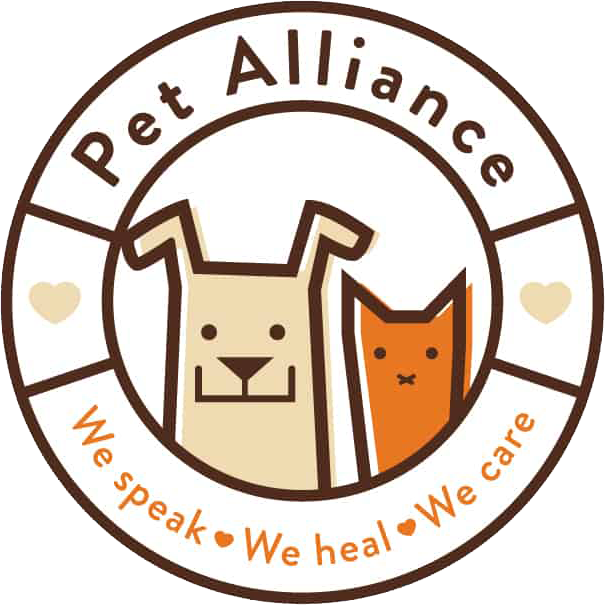
Bringing a pet into the family is the start of an incredible journey for you and your new furry friend, but it’s also the most formative time for you and your pet’s long-term relationship. Each pet is an individual with their own history, and puppies and kittens are ready to figure out where they fit in your family. We need to be their guide-post.
There are also some unique instance when adopting from a shelter that can affect your first few weeks with your new pet that are important to be aware as they can help with their transition.
Whether you adopted a puppy, kitten, or an adult dog or cat, the following simple tips can help you better understand your pet needs, as well as, help
with any behavior issues right off the bat. But what WE must first do as a pet parent is manage our expectations. The following video features Pet Alliance’s Behavior and Animal Care Specialist, Christina Bunner who has 5 tips for bringing your new pet home from the shelter:
1. Have Patience
As noted above, managing expectations about your pet’s reaction to their new home and surroundings is key to having your pet thrive after being adopted from the shelter. With much of that stemming from patience. Often times, transitioning from shelter life to a quiet home can be a bit daunting with all the new smells, family members, and routines they have to now navigate. Simple things like commands and normal behaviors could need time to adjust. So help them thrive by being patient first.
2. Establish a Routine
One way to easily help a dog or cat adjust is getting them on a reliable routine. As any pet parent knows, this is one of the biggest responsibilities we have to ensure the care of any animal. So much so, that we leave weddings early to ensure the dog is feed right at 6PM, or we cut visits short to make sure the cat gets their daily medication on time.
A major key to their happiness is providing this stability in the form of mealtimes, playtime, walk time, and enrichment time. This is incredible prevalent for a shelter animal. To keep our operations smooth and efficient, so we keep everything on a tight schedule with kennel cleanings and breakfast done every morning within the span of a few hours. Followed by walks, or enrichment and hours filled with constant human interaction.
So it can be jarring to suddenly break up this routine or half the amount of interaction that they love and carve. The video explains a bit more about this subject, but make sure when you bring your pet home that you are somewhat familiar with their current routine at the shelter, and integrate portions of it into their life at home.
3. Provide Boundaries
This next tip is entirely training based and usually affects dogs more than cats. Boundaries are important as, once again, your pet is an individual and sometimes… their individuality flag can fly a bit too high. Meaning, your pet can take advantage of situations and cause behavior issues.
In order to set boundaries, your pet needs to be trained. Even basic commands can help your dog focus. Whether they’re looking for attention, they can’t stop barking, or they just need help paying attention — by training them and teaching them to be patient you are helping them become a well-behaved dog.
4. Provide Enrichment
Your pet will get bored, especially if they’re coming for a shelter environment. They’re constantly being challenged and stimulated while in our care. Both physically with walks and play time, as well as mentally with new smells from our enrichment garden like fresh catnip and herbs, and the use of puzzle toys.
You can enrich the life of our pet by adding enrichment to your routine. Going on long walks or runs, active play time with toys they love, or making your own enrichment garden with herbs you can add to puzzle toys. The possibilities are endless!
5. Socialize Young Animals
For new puppy or kitten owners, it’s incredibly important to socialize your pet. It’s first important to make sure your pet is up-to-date on their vaccines and are an appropriate age for socialization as their immune systems are still developing. That’s why we recommend asking your veterinarian about your particular pet before introductions are made or before heading to the dog park.
For puppies and kittens, making sure they have interaction with other adult dogs and cat will teach them boundaries, as well as help expose them to other pets in general. Often times, animals can be afraid of other dogs and cats on sight, which can come off as aggressive or cause them to hide. The same is true for people outside your family. At this formative age between 2 months and 6 months, meeting with other animals and people will help them adjust and display desired behaviors.

Dog Nutrition
Pet Alliance veterinarian, Dr. Julie Andersen, gives us a bite-sized look into the world of dog nutrition. The first thing you should consider regarding your

We’ve Broken Ground on our New Orlando Shelter!
We’ve Broken Ground on our New Orlando Shelter! Most organizations use golden shovels to break ground for a new building, but not Pet Alliance. Instead,

Our History
Our History Founded in 1937 when a group of concerned citizens began meeting in Downtown Orlando, Pet Alliance, then known as the Orlando Humane Society,

